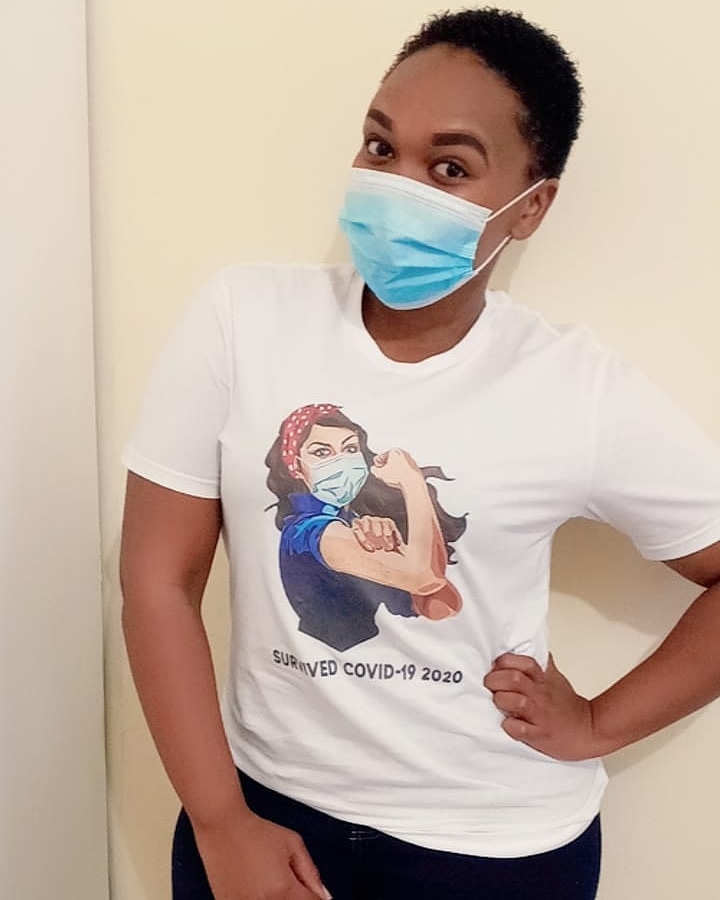The next day Lindy was taken by ambulance to Mavuso Quarantine Centre where she stayed for seven days. Lindy admits that she was initially scared and freaked out by the idea of having to be admitted at the centre, as being hospitalised was an indication that she was very ill and close to death. “I felt like people who go to the hospital end up dying there.”
Much like one would picture a hospital ward for patients with an infectious and deadly disease, Lindy imagined Mavuso to be a place where everyone is either on oxygen or dying. Given that this was also going to be her first major stay at a hospital, Lindy admits that if given the option she would have begged the ministry’s doctors to rather let her stay at home.
The Reality
Arriving at Mavuso in the afternoon, Lindy remembers being immediately confronted by the change in the environment: doctors in white coats walking around and a number of ambulances on site. She describes how the ward was empty when she first arrived, given that it was the time of day when the patients were outside taking in some ‘vitamin sunlight’.
Lindy recalls, however, how the set-up of the ward made the centre not look like a hospital. This gave her some comfort and made her feel like being there wouldn’t be so bad. She then met some of her fellow patients who had now returned from being outdoors. She recalls them being energetic and not looking sick at all. She even asked them if indeed they were sick, and they responded by saying: “Kukhala akusiti.”
Seeing them in that cheerful and upbeat state, and not looking like they were on the brink of death, gave Lindy the hope she needed amidst this scary diagnosis. So Mavuso turned out not to be this grim place that she had imagined it would be. Moreover, she describes the staff as being warm and caring, and they were constantly checking up on her.
Looking back, Lindy feels that being at Mavuso turned out to be the better option than trying to manage the virus at home where she also had to deal with feelings of loneliness and fear. At the centre there was camaraderie between the patients as they recovered together. Hence it was more healing and morale-boosting being at Mavuso where she was around other people.
The day Lindy was discharged, on August 25, was a moment of triumph as she remembers feeling like she had “dodged death”.

Silver Lining to a Scary Diagnosis
On how her outlook on life has changed, Lindy says she feels motivated to do the things that she had been procrastinating before her diagnosis — such as continuing with her plans to go for further studies.
“Once you’re at the point of life-and-death all the things [that you didn’t do] come back to you and you’re like: ‘But vele why didn’t I do this or that?’ And now you don’t have the opportunity because you are sick and dying. So I felt like now it’s the time for me to start living my life — do the things that I said I always wanted to do — and just go for it.”
Continue being Cautious
As a COVID-19 survivor, Lindy hopes people will continue being cautious.
“The fact that restrictions have now loosened up doesn’t mean that this thing is gone, it is still very much alive and it is REAL. It is as real as real can get. People really need to continue taking this thing seriously.”
Her advice to those that test positive: “Don’t panic. I think COVID kills you in your mind first before it gets to your body, and once your mind has died then your body has a hard time fighting for you. So don’t panic… utawuphila ”
By the Swazi Innerviewer (Fellow COVID-19 Survivor)



I was reading some of your articles on this internet site and I believe this internet site is rattling instructive! Keep on posting. Kat Eddy Lobell
Thank you so much!